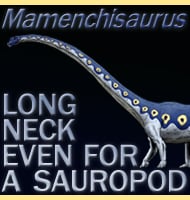In Depth
Like with relative genera such as Gillicus and Xiphactinus, Ichthyodectes would have been a key predator in the waters of the Western Interior Seaway, the shallow sea that submerged the central portion of North America during the Cretaceous. Ichthyodectes had a long body similar to that of a modern day barracuda and was well adapted for efficient high speed cruising, as well as bursts of intense speed.
Further Reading
- Another Sternberg “Fish-within-a-Fish” Discovery: First Report of Ichthyodectes ctenodon (Teleostei; Ichthyodectiformes) with Stomach Contents. - Transactions of the Kansas Academy of Science 113(3 & 4):197-205. - Michael J. Everhart, Scott A. Hageman & Brian L. Hoffman - 2010.










